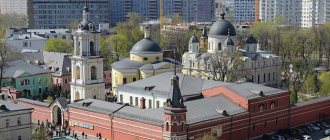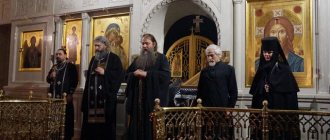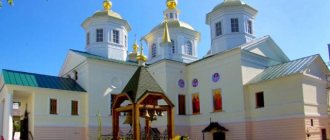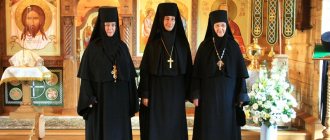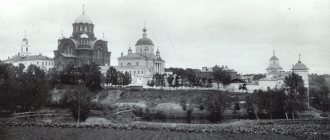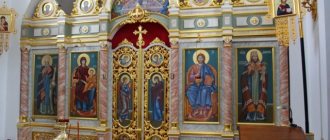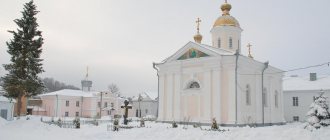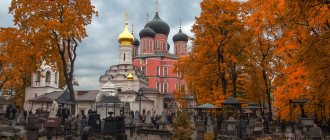Mir
Russia Moscow region sanatorium village Gorki Leninskie Holy Cross Monastery Jerusalem The map is loading…
{"format":"leaflet","minzoom":false,"maxzoom":false,"limit":50,"offset":0,"link":"all","sort":[""], "order":[],"headers":"show","mainlabel":"","intro":"","outro":"","searchlabel":"\u2026 \u0441\u043b\u0435\ u0434\u0443\u044e\u0449\u0438\u0435 \u0440\u0435\u0437\u0443\u043b\u044c\u0442\u0430\u0442\u044b","default":"","import-annotation":false,"width ":"auto","height":"350px","centre":{"text":"","title":"""link":"""lat":55.5100350000000020145307644270360469818115234375,"lon": 37.85279899999999742021827842108905315399169921875,"icon":""},"title":"","label":"","icon":"","lines":[],"polygons":[],"circles":[ ],"rectangles":[],"copycoords":false,"static":false,"zoom":8,"defzoom":14,"layers":["OpenStreetMap"],"image layers":[] ,"overlays":[],"resizable":false,"fullscreen":true,"scrollwheelzoom":true,"cluster":false,"clustermaxzoom":9,"clusterzoomonclick":true,"clustermaxradius":80, "clusterspiderfy":true,"geojson":"","clicktarget":"","showtitle":true,"hidenamespace":false,"template":"","userparam":"","activeicon": "","pagelabel":false,"ajaxcoordproperty":"","ajaxquery":"","locations":[{"text":"\u003Cb\u003E\u003Ca href=\"/palomnik/%D0% 9A%D1%80%D0%B5%D1%81%D1%82%D0%BE%D0%B2%D0%BE%D0%B7%D0%B4%D0%B2%D0%B8%D0%B6% D0%B5%D0%BD%D1%81%D0%BA%D0%B8%D0%B9_%D0%98%D0%B5%D1%80%D1%83%D1%81%D0%B0%D0% BB%D0%B8%D0%BC%D1%81%D0%BA%D0%B8%D0%B9_%D0%BC%D0%BE%D0%BD%D0%B0%D1%81%D1%82% D1%8B%D1%80%D1%8C\" title=\"\u041a\u0440\u0435\u0441\u0442\u043e\u0432\u043e\u0437\u0434\u0432\u0438\u0436\u0435\u043d\u0441\ u043a\u0438\u0439 \u0418\u0435\u0440\u0443\u0441\u0430\u043b\u0438\u043c\u0441\u043a\u0438\u0439 \u043c\u043e\u043d\u0430\u0 441\u0442\u044b\u0440\u044c\ "" u0418\u0435\u0440\u0443\ u0441\u0430\u043b\u0438\u043c\u0441\u043a\u0438\u0439 \u043c\u043e\u043d\u0430\u0441\u0442\u044b\u0440\u044c\u003C/a\u003E\u 003C/b\u003E",» title":"\u041a\u0440\u0435\u0441\u0442\u043e\u0432\u043e\u0437\u0434\u0432\u0438\u0436\u0435\u043d\u0441\u043a\u0438\u0439 \u041 8\u0435\u0440\u0443 "Link":"""lat":55. 5100350000000020145307644270360469818115234375 ,"lon":37.85279899999999742021827842108905315399169921875,"icon":""}],,"imageLayers":[]}
55.508881; 37.849877
Russia, Moscow region, Leninsky urban district, Gorki Leninskie sanatorium village
village of the Gorki Leninskie sanatorium, Moscow region
Russia
Phone fax:
8 (495) 549 81 00,
Holy Cross Exaltation Jerusalem Monastery
- an active stauropegial convent in the village of Lukino, Domodedovo urban district, Moscow region.
History[edit]
The year of foundation of the Holy Cross Jerusalem stauropegial monastery for women was 1837. Then, at the church of St. much Flora and Lavra created a women's almshouse, which existed for 20 years.
Beginning in 1855, a native of the village of Syanovo, who accepted the feat of foolishness, Ivan Stepanovich, began to participate in her life. He was known to many merchant families, one of which, the Savatyugins, loved him the most. After the death of the head of the family, the blessed one turned to the widow Praskovya Rodionovna with a request for financial assistance to organize the reading of the Undying Psalter for the deceased. This was the beginning of the emergence of the monastery.
Using funds donated by the widow, a two-story stone structure was erected. Jerusalem Icon of the Mother of God, sent by Vl. Philaret as a blessing for the consecration of the almshouse, it became its main shrine. Praskovya Rodionovna herself decided to devote the rest of her life to worship, becoming one of the sisters.
At the request of Vl. Philaret in 1865, the almshouse was renamed the Floro-Lavra community for women, the founder of which was P.R. Savatyugina (later - nun Pavel). Ivan Stepanovich was named the sisters' spiritual mentor.
After the death of her husband and daughter, Alexandra Golovina, a native of the village of Lukino, she decided to donate her estate and land plots to the women’s community. Together with ow. Filaret, a deed of gift was drawn up. The sisters of the community had to move 7 miles from the village. Old Yam, where the almshouse was originally located.
The organization of the move fell on the shoulders of Archimandrite Pimen (Myasnikov). And the transportation of a residential, furnished house for the sisters was entrusted to P.R.’s nephew. Savatyugina, Savatyugin Egor Fedorovich. He was later involved in the arrangement.
Since on the territory of the former estate of the Savatyugin merchants there was a Church of the Exaltation of the Cross, built in 1846, the community received the name of the Exaltation of the Cross. Over time, the temple became very crowded, so it was decided to rebuild a more spacious building. The start of construction dates back to 1871. The new building was added to the refectory. From now on, the reading of prayers and Psalms by the sisters was carried out here. It was also decided to transfer the main shrine of the temple to a new building. The consecration took place on October 13, 1873.
During the entire period of Mother Pavla’s service (1871-1886), the following was built in the church:
- the abbot's corps; - cell building on 2 floors; - an inn for pilgrims. Nowadays, the hotel is located next to Domodedovo Airport; - house for the clergy; - Bell tower; - stone fence; - horse and cattle yards.
An orchard and a vegetable garden were also established. As the interest surrounding the community increased, it became necessary to build a larger space for worshipers. A significant contribution to this construction was made by the peasant Sergei Tikhonovich Sorokin and the merchant Dmitry Mikhailovich Shaposhnikov, who built a spacious refectory with their own money.
After Mister Pavla submitted a request for dismissal, Mister Evgenia (Vinogradova) was appointed in her place in 1886. With her help and with the participation of Princess Maria Yakovlevna Meshcherina, in 1889 a hospital with 5 beds, an orphanage with 6 beds and a parochial school with 2 floors for the education of 40 girls were built.
February 1887 was marked by the transformation of the community into a monastery, which opened on July 11, 1887. In the summer of 1893, with the participation of the merchant Vasily Fedorovich Zholobov, the construction of the new cathedral church was almost completed. In 1896, the consecration of the thrones took place: the main and northern ones - on July 15; southern - September 15.
Holy Cross Monastery in Jerusalem. Photos of the early 20th century
The “Vasilievsky” nursing building, which has survived to this day, was also built by V.F. Zholobov. In 1909, a house was built to the right of the entrance to the monastery to receive high-ranking officials. Around the same year, Zholobov built a hotel (Domodedovo, Moscow) on 2 floors with 15 beds.
After the revolution of 1917, the monastery economy was nationalized. Subsequently, street children were housed in the temple, and the nuns were sent as workers to communes and state farms. In the 20s, the All-Russian Central Council of Trade Unions Holiday House No. 10 was organized within the walls of the monastery. Even then, crosses and domes that were in the way of the owners were removed from the Ascension Cathedral.
By resolution of the meeting dated April 27, 1924, it was decided to close the temple. At that time, services were performed only in the Church of the Exaltation of the Cross, where the main shrine was moved. During the Second World War, a hospital was set up in the monastery. During this period, believers miraculously take the icon of the Mother of God to the church in the village. Myachkovo, where she will stay for about 50 years.
The locally revered Jerusalem Icon of the Mother of God was located in the monastery. The monastery was destroyed in 1919. All icons, library and church utensils were taken away or burned. The nuns were kicked out and exiled to different places. The churches were rebuilt into dormitories, crosses were removed from all domes and thrown down. A tobacco factory was opened on the territory, and a hospital was equipped during the war. In 1970, a Children's Rehabilitation Center for disabled children was opened on the territory of the monastery.
In March 1992, the monastery was given to the Russian Orthodox Church for works of mercy and charity. A revival began in it - first of all, the reading of the Vigilant Psalter and the restoration of the monastery itself from the ruins.
Holy Cross Monastery in Poltava: history of creation
It was founded in 1650 as a monastery. The initiator of its creation is called Martyn Pushkar, who was supported by the Cossacks and residents of Poltava. The first buildings were made of wood and were easily destroyed. At the end of the seventeenth century, a decision was made to build a stone cathedral with money provided by Vasily Kochubey, who was then a Cossack judge. In 1708 he was executed, and his son V.V. had the opportunity to complete what he started. Kochubey.
The date of completion of the construction of the cathedral is unknown. Those times were very turbulent. The monastery was repeatedly subjected to devastation and almost complete destruction. In 1695, it was ravaged by the Crimean Tatars; in 1709, after restoration, it was destroyed again, this time by Swedish troops.
The illumination of the Holy Cross Monastery took place only in 1756. From this date its heyday begins: the construction of new buildings and auxiliary premises. This period was marked by the appearance of new churches and bell towers. At the end of the eighteenth century, the monastery became a kind of cultural center. The opening of the Slavic Seminary brought to these blessed walls, in addition to talented students, many famous people of that time.
After the revolution, difficult times began for the monastery. It was finally closed in 1923. For some time, the premises of the monastery housed a children's colony for street children; later, student dormitories and canteens were located in the buildings. The monastery returned to its true purpose only in 1942, when a community of nuns petitioned for its restoration as a convent. Temples and buildings were heavily damaged by German bombing, but with the help of novices in the post-war period, the buildings were gradually restored. In the sixties the monastery was closed again. In 1991, the monastery opened its doors to the women's community.
Current state[edit]
Monastic life is gradually being revived. Works of mercy and charity are being revived. On patronal feast days, religious processions are held at the monastery, and the sisters serve a festive meal for all pilgrims in the open air. The monastery has a subsidiary farm, the fruits of which are distributed to all those in need, as well as to large families. The miraculous Jerusalem Icon of the Mother of God has been returned to the monastery; every Sunday a prayer service is read before it and the sisters chant the akathist.
A new period of restoration of monastic life and restoration of the monastery began in 2001 with the advent of nun Ekaterina (Chainikova), who attended the theological school of the elders of the Pskov-Pechersk monastery, acquired monastic experience at the Pukhtitsa Holy Dormition Convent and through obedience in the Moscow Patriarchate. Under her leadership, with the direct paternal care of the monastery of His Holiness Patriarch Alexy II, the monastery began to improve itself and conduct active social work.
The Church of the Jerusalem Icon of the Mother of God with its sister building adjacent to it has been restored. The Holy Jerusalem Icon of the Mother of God was installed in its historical place.
Holy Cross Church
The Holy Cross Church was completely restored, painted with frescoes, decorated with a majestic iconostasis and many holy icons. Some of the icons that are now in the temple were there before it was closed.
At the monastery, under the direct patronage of the abbess, a small but active and cheerful Sunday school began its life, in which the children of parishioners gained the opportunity to communicate with their believing peers. Pupils of the school sing during services, stage performances and concerts both for the nuns and parishioners of the monastery, and “on tour” - either in a nearby rehabilitation center, or in various Moscow parishes, or with congratulations from His Holiness Patriarch Alexy. But it’s not only the holidays that the monastery holds for sick children that connect the monastery with the rehabilitation center.
The priests of the monastery provide the necessary pastoral assistance to the children and their parents in this center, both in the monastery itself and on the territory of the center buildings. A special page in the life of the monastery is occupied by friendship with the Orthodox Orphanage from the village of Uspenskoye, Noginsk district, Moscow region. For several years now, children from this institution have been coming to the monastery for holidays: to relax, make whatever contribution they can to the revival of the monastery, and communicate with the monastery animals.
Reviving the traditions of Russian monastic farming, the monastery acquired a new barnyard, providing the nuns with dairy products. The monastery products, famous for their quality, are happily bought by surrounding residents, and the proceeds from the sale go towards the restoration of the monastery. Vegetable gardens have always been an integral part of the life of monastics, who feed on the fruits of their labor and consume mainly food of plant origin. There are also in the Holy Cross Monastery. There is a deep spiritual meaning in this painstaking agricultural work. By cultivating the fruit-bearing land and removing weeds from it, the monk prayerfully cultivates the “land of his heart,” removing sinful passions from it, planting and cultivating Christian virtues in the soul.
In 2006, the monastery acquired a courtyard in capital Moscow - the Church of the Jerusalem Icon of the Mother of God behind the Intercession Gate (Talalikhin St., 24). This temple was built in 1912 by architect S.F. Voznesensky in the style of Russian tented churches of the 16th century. It could accommodate up to 2,000 pilgrims and was one of the best in Moscow in terms of decoration. Now not a trace remains of its former splendor...
The metochion immediately attracted those Moscow parishioners who feel the special spirit and taste of monastic prayer, and strive to join at least partly in the life of “earthly Angels - heavenly people” - monks. A community of believers formed around the temple; the temple became for them the Home where their souls found grace and peace from the many sorrows and worries of modern life.
The current abbess of the convent Ekaterina Chainikova
With her arrival, the monastery began to develop and revive like never before. She began the restoration of all the churches destroyed in post-revolutionary times.
Under her management, all the surviving icons were returned, which could not be found and destroyed. Under her leadership, a new Sunday school began operating. Vegetable gardening has been revived. The monks give the entire harvest to orphans and low-income families. In general, it is difficult to overestimate the work that the abbess did to revive the monastery.
Shrines[edit]
Jerusalem Icon of the Mother of God.
The original Jerusalem icon of the Most Holy Theotokos, according to legend, was written by the holy Apostle and Evangelist Luke in the 15th year after the Ascension of the Lord, in Gethsemane.
In 463, the Jerusalem icon was transferred to Constantinople by the Greek king Leo the First, or the Great, and placed in the temple of the Mother of God - Pygia, i.e. source, and remained here until the time of the pious king Heraclius.
When, through the intercession of this icon, the Scythians who fought against Constantinople were completely defeated and expelled from the kingdom, the Jerusalem icon was transferred to the Blachernae Church of Constantinople, where it remained until the reign of Leo the Sixth Philosopher. Under him, this miraculous icon was transferred to Chersonesus or Korsun.
In 988, the icon was brought as a gift to the Great Equal-to-the-Apostles Prince Vladimir, when he conquered this city and received holy Baptism in it. Subsequently, Prince Vladimir gave this Korsun shrine to the Novgorodians who converted to the Christian faith.
It remained in the Novgorod St. Sophia Cathedral until the reign of Ivan Vasilyevich the Terrible, who in 1571 transferred it to the Assumption Cathedral of the Moscow Kremlin, from where this holy image was stolen during the invasion of Napoleon. Its place was taken by the correct list, taken from the Moscow Church of the Nativity of the Virgin Mary, on Senya. By the providence of God and the feat of faith of selfless Orthodox believers, the Jerusalem icon was saved from the desecration and destruction that overtook many Orthodox shrines during the years of the Bolshevik terror and subsequent persecution of the Faith and the Church. In 1993 she returned to the monastery. Located in the Church of the Jerusalem Icon of the Mother of God.
Particles of relics
holy saints of God: martyr.
St. George the Victorious; St. Demetrius, Metropolitan of Rostov; St. Nifont, Bishop of Novgorod; St. Tikhon, Patriarch of Moscow; St. Pimena Postnik; St. Lawrence the Recluse, Bishop of Turov; St. Macaria; sschmch. Kukshi; St. Anatolia; St. Sylvester; St. Abraham the Hardworking; St. Isaiah the Wonderworker; St. Ilia Muromets; St. Alypius the Iconographer; St. Basil the Martyr, Great Martyr Catherine; sschmch. Konstantin Bogorodsky; St. Theophan the Recluse; St. Seraphim of Sarov; St. Theodore of Sanaxar; St. Aristocleus of Moscow; prmch. Theodora; St. Pavel Tobolsky; St. Euphrosyne of Moscow; St.blgv.kn. Andrey Bogolyubsky; of the venerable Kiev-Pechersk fathers, who labored in the Near and Far Caves. Located in the Church of the Jerusalem Icon of the Mother of God.
Piece of the myrrh-streaming chapter
Hieromartyr Clement, Pope of Rome;
a particle of the relics of the Great Martyr Catherine. Located in the Holy Cross Church.
Literature
- Palamarchuk P. G.
- Forty forty. T. 2: Moscow within the boundaries of the Garden Ring. M., 2004, 744 pp., 16 l. ill. (ISBN: 5-7119-0013-7 (vol. 2))(ISBN: 5-212-00500-0) - Architectural monuments of Moscow. White City. M.: Art, 1989, 380 pp., illus. (BBK: 85.113 (22)1)
- Sytin P.V.
Where did the names of Moscow streets come from? M., 1959. P. 142. - Rozanov N.P.
History of the Moscow diocesan administration. M., 1871. Ch. Z. Book 2. - Mashkov's guide. P. 176 and P. XXXVIII.
- Soloukhin V. A.
Letters from the Russian Museum. M. 1967. P. 14. - Mashkov I.P.
An architect's companion in Moscow. M., 1895 - Journal of the Moscow Patriarchate. 1977. No. 8. P. 77.
- New Russian Martyrs / Comp. prot. M. Polsky. Jordanville, 1957. Vol.2. S. XIIL
Patronal holidays[edit]
January 9 - memory of St. Philip, Metropolitan of Moscow
Ascension of the Lord
— 40th day after Easter
Dormition of the Blessed Virgin Mary
- August 28
Exaltation of the Life-Giving Cross of the Lord
- September 27
October 25 - Jerusalem Icon of the Mother of God
Abbots
Abbots
- Joasaph (mentioned 1563)
- Nikon (mentioned October 1567)
- Jacob (May 2, 1588 - ?)
- Jonah (mentioned 1598)
- Tikhon (mentioned 1615)
- Bogolep (mentioned 1623)
- Joseph (mentioned 1645)
- Varlaam (mentioned 1646 - mentioned 1647)
- Serapion (1649 - November 14, 1651)
- Joseph (December 30, 1651 - ?)
- Moses (mentioned 1653 - mentioned 1654)
- Gennady (mentioned October 29, 1655)
- Joseph (mentioned 1659 - mentioned 1660)
- Arseny (1661 - March 12, 1665)
- Tikhon (1665—1670)
- Pachomius (mentioned 1673-1674)
- Tikhon (1674 - mentioned 1675)
- Nikephoros (1676-1680)
- Ephraim (1680-1688)
- Varlaam (1689-1692)
- Sergius (1698 - August 29, 1700)
- Sylvester (1700-1706)
- Macarius (mentioned 1709 - mentioned 1726)
- Macarius II (Chentsov) (mentioned 1728)
- Isaac (1731-1740)
- Thaddeus (Kokuilovich) (1741—1742)
- Theophilus (1746 - mentioned 1748)
- Barsanophius (1750-1759)
- Alexander (1763)
- Benjamin (1763—1771)
- Philip (Rodionov) (December 23, 1771-1775)
- Serapion (Alexandrovsky) (March 10, 1775 - January 27, 1776)
- Joasaph (Zabolotsky) (1776 - February 1, 1778)
- Joseph (January 6, 1778-1781)
- Iriney (Klementyevsky) (September 1782 - December 9, 1783)
- Gideon (Zamytsky) (December 9, 1783-1785)
Archimandrites
- Sergius (November 5, 1785—1801)
- Nathanael (1802-1810)
- Gennady (Shumov) (1810 - October 21, 1811)
- Parfeniy (Chertkov) (December 17, 1811 - October 14, 1813)
How to get there[edit]
Travel by transport:
m. Domodedovskaya, the last car from the center, you immediately go up, in front of you is the “Snow Queen” store, if you stand with your back to it, then a little to the left on the road 871 minibus stops. Tell the driver that you are going to the monastery (so that he turns away from the highway towards the monastery). You can also take any bus going to Domodedovo airport, get to the Sanatorium stop, then walk 15 minutes - cross the highway over the bridge, and go straight to the monastery gates.
Address
: 142031, p. Lukino, Domodedovo district, Moscow region, Monastyrskaya street, Jerusalem Holy Cross Convent.
Tel/fax:
8 (495) 549 81 00,
Holy Cross Monastery (Nizhny Novgorod): history of foundation
The radiance of crosses and the ringing of bells of this monastery sanctifies one of the most beautiful ancient cities of the Russian land - Nizhny Novgorod. Finding the abode behind the huge faceless buildings is not so easy. It’s as if someone wants to hide this treasure from human eyes, which, in addition to its architectural and historical value, also has a special spiritual significance. However, it is quite possible to find the monastery among the buildings: crosses will help with this, which will lead the guest from the city square directly to the gates of the monastery.
The ancient Holy Cross Monastery (Nizhny Novgorod), as well as other architectural and spiritual values located here, has its own history. It began in the middle of the fourteenth century and is associated with the name of the Venerable Theodora of Nizhny Novgorod (in the world Anastasia Ivanovna). She is the founder of the monastery. A few years after the death of her husband, Suzdal Prince Andrei Konstantinovich, who adopted the schema with the name Dionysius, Anastasia gave away all her property, accepted monasticism, was named Vassa and entered the Conception Monastery. Later, having already accepted the schema, she became Theodora. It should be noted that this monastery was built during the life of Andrei Konstantinovich and was located at the very foot of the Nizhny Novgorod Kremlin on the Volga bank.
Pilgrim[edit]
If you want to work in a monastery.
The monastery always gladly receives pilgrims who want to work for the Glory of God. If you are going to come for a few days, before your trip, call 8 495 549 81 00 and find out if there are free places in the hotel for pilgrims.
In May, field work begins in the monastery. We need help: digging up a garden, planting potatoes and other vegetables, planting an orchard. Clean the monastery territory after winter. We are waiting for everyone who can work for the Glory of God. After planting, watering the garden is required. Then weeding. Haymaking begins in mid-June.
Accommodation in the monastery hotel and meals in the refectory are free for workers. During the break between obediences and in the evening, after the evening rule, you will have time to relax, walk around the monastery, enjoy its beauty, and feel the unforgettable atmosphere that reigns in the monastery. After all, she is truly a corner of Heaven on earth.
Book a tour of the monastery.
Applications for a sightseeing tour of the Holy Cross Jerusalem Stauropegial Convent are accepted by phone: 8 495 549 81 00. Please call in advance. Excursions are free of charge. You can leave a donation for the restoration of the monastery.
Accommodation in the monastery hotel.
If you did not come as a worker, and would like to stay for some time at the monastery hotel, call the numbers: 8 963 772 39 35,. Hotel accommodation is provided for a donation.
You can also eat in the monastery refectory, located on the territory of the monastery. The refectory is open daily.
National treasure of Ukraine
This beautiful monastery is one of the most valuable architectural monuments. Poltava Holy Cross Monastery includes several churches and a bell tower. Built on a hill, it is clearly visible from all sides and does not have a main facade - all sides of this architectural ensemble are equal.
The value of the Holy Cross Monastery is also that it represents a rare example of Ukrainian Baroque. From a distance you can see its three components.
- The highest bell tower, the style of which is reminiscent of similar structures on the territory of the Kiev Pechersk Lavra. It was erected in 1786.
- The seven-domed Holy Cross Cathedral is located in the central part of the monastery territory. In general, in its architectural tradition it is close to other cathedrals in Ukraine, but there are a number of details that distinguish this temple from others similar to it.
- Trinity Church, which is a single-domed stone structure, which served as a refectory for some time, but was rebuilt and consecrated in the second half of the 19th century.
Despite the fact that all the buildings were created at different times, together they form a complete architectural ensemble, being a true decoration of the Poltava region.
